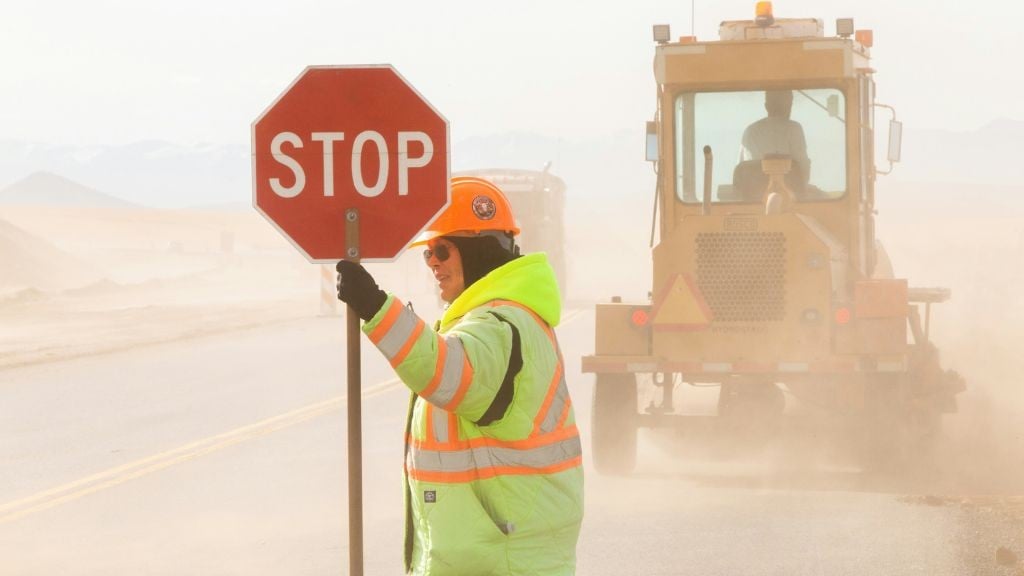How connected work zones minimize harm to road crews
Impact detection and response systems built into crash cushions, guardrails, and signs provide immediate crash notifications to road crews and save lives

Smart device communication has reshaped industries across the globe, and road safety is no exception. The rapid detection and timely response to roadside collisions can mean the difference between a quick repair and a tragic secondary crash. Roadside safety devices like crash cushions, guardrails, and signs are essential tools for minimizing harm, but their effectiveness depends on knowing when they have been compromised and acting quickly. This is precisely how advanced impact detection and alert systems from TrafFix Devices are transforming the landscape of roadside safety.
Immediate notifications to maintenance crews not only save lives but also ensure that damaged safety equipment is replaced or repaired before it puts other motorists at risk. In a time when many transportation departments are juggling limited resources and high traffic volumes, having quick access to the right information is a game-changer for keeping roadways safe and infrastructure in working order. Consistent data flow supports faster decision-making, predictive maintenance, and ultimately, safer roads for both drivers and workers.
Connected work zones: Real-time safety management
Modern roadside safety systems address critical safety concerns that frequently arise in temporary and permanent roadway environments. Traditional methods of monitoring roadside safety devices have relied on manual checks and rudimentary alerting systems, posing significant risks due to delayed responses and inaccuracies in information.
Today's advanced alerting systems provide real-time notifications in case of impacts, allowing road crews and emergency medical services to respond swiftly. Rapid response significantly reduces the risks of secondary accidents, where vehicles collide with already impacted devices, thereby protecting additional motorists and roadside workers.
Additionally, these systems can provide information about crash location, helping response teams prepare with the accident site's specific needs in mind. From traffic control measures, repair parts, and personnel needs, this information enables response teams to be more proactive, rather than reactive once they arrive at the scene. The result is not only a measurable increase in efficiency but also a meaningful reduction in risk and lives saved.
Overcoming challenges in roadside asset tracking
A major challenge for transportation agencies, particularly Departments of Transportation (DoTs), is accurately tracking and maintaining the numerous safety devices deployed across roadways. Temporary work zones present an even greater logistical complexity due to their dynamic nature, frequent repositioning of safety devices, and the number of assets involved.
Advanced tracking tools directly address these challenges by providing precise GPS locations, product identification, and impact history data for each safety asset. Federal regulations require DoTs to maintain detailed Roadway Asset Databases, especially focusing on critical safety features like crash cushions and guardrail end treatments. These databases are essential not only for day-to-day maintenance but also for staying compliant when national safety standards change. When crash testing criteria are updated, agencies must know exactly where outdated devices are located, in order to prioritize replacements. Real-time data makes that process both faster and more accurate. Additionally, with better tracking capabilities, asset management becomes seamless, fostering compliance with federal standards and greatly improving the efficacy of asset maintenance and replacement cycles.
Perhaps the most powerful feature of modern roadside safety systems is their ability to detect impacts instantly. This capability drastically reduces emergency response times, ensuring that damaged safety equipment is repaired swiftly, which helps maintain consistent and optimal protection for motorists. A striking example of the life-saving potential of immediate alert systems comes from a recent case involving the California Department of Transportation (Caltrans). Upon receiving an impact alert, Caltrans crews were able to reach a severe crash scene within minutes, rescuing a family trapped inside a burning vehicle. This rapid intervention underscores the critical value of real-time crash notification systems in roadside safety management.
Asset management and resource allocation
The availability of real-time data empowers departments to make informed decisions regarding maintenance and infrastructure upgrades. For instance, road crews can proactively manage maintenance schedules, anticipate necessary traffic control measures during repairs, and reduce exposure to hazardous working conditions. These proactive insights significantly enhance operational efficiency and safety for maintenance teams.
By having immediate access to comprehensive asset data — including device location, condition, impact history, and model specifications — transportation agencies can effectively prioritize repairs, replacements, and infrastructure upgrades. This data-driven approach facilitates better resource allocation, reduces inspection times, and ultimately, lowers the overall cost of roadway maintenance.
Long-term cost benefits and enhanced road infrastructure
Investing in smart road safety technology presents clear long-term economic advantages. These systems reduce the frequency of manual inspections, streamline repair processes, and decrease downtime for safety equipment. By optimizing asset utilization and reducing maintenance costs, transportation departments can reallocate financial resources to other critical infrastructure improvements.
Additionally, data collected from these systems enables more precise safety analyses, supporting evidence-based decisions for road infrastructure upgrades. When regulatory changes require hardware updates, transportation agencies can easily identify and prioritize outdated equipment, ensuring continuous compliance with evolving safety standards.
Another long-term benefit lies in the ability to minimize redundant site inspections. If systems can confirm a crash cushion has not been impacted, for instance, a crew can skip that location, conserving labor and vehicle hours. This efficiency compounds over time, generating substantial budgetary and environmental benefits.
Leading the revolution in road safety
The impact of real-time alert systems on road safety is already here. From letting crews know exactly where a crash happened and what they will need to fix it, to helping agencies stay ahead of changing safety standards, these systems are turning static safety gear into intelligent tools. It is less about flashy tech and more about better decision-making, faster responses, and safer outcomes.
Companies like TrafFix Devices demonstrate the benefits of data connectivity in road safety with its Sentinel Impact Tracker. Engineered for use on various roadside safety devices, such as crash cushions, signs, and guardrails, the Sentinel delivers immediate notifications upon impact. It provides critical data including asset GPS location, product specifications, images of road conditions, and detailed repair histories.
Importantly, the Sentinel can be mounted on both temporary and permanent installations, offering flexibility for departments managing diverse types of infrastructure. Its adaptability ensures that safety insights are not limited to fixed locations but can also extend to mobile or seasonal work zones where risks are often higher. The Sentinel system, Tracker, with its weatherproof design and up to five years of battery life, seamlessly integrates with existing roadway infrastructure, feeding essential data into government Roadway Asset Databases. This capability ensures transportation agencies maintain accurate records of their roadside assets, improving the efficiency of resource allocation, repair prioritization, and regulatory compliance.
Designed to withstand rigorous environmental conditions and adhere to international highway safety standards, the Sentinel Impact Tracker exemplifies the transformative potential of real-time, actionable data in the road safety space. By significantly enhancing response times, reducing secondary crashes, and optimizing asset management, the Sentinel positions TrafFix Devices at the forefront of innovation, ensuring safer roads and protecting lives across the globe.



